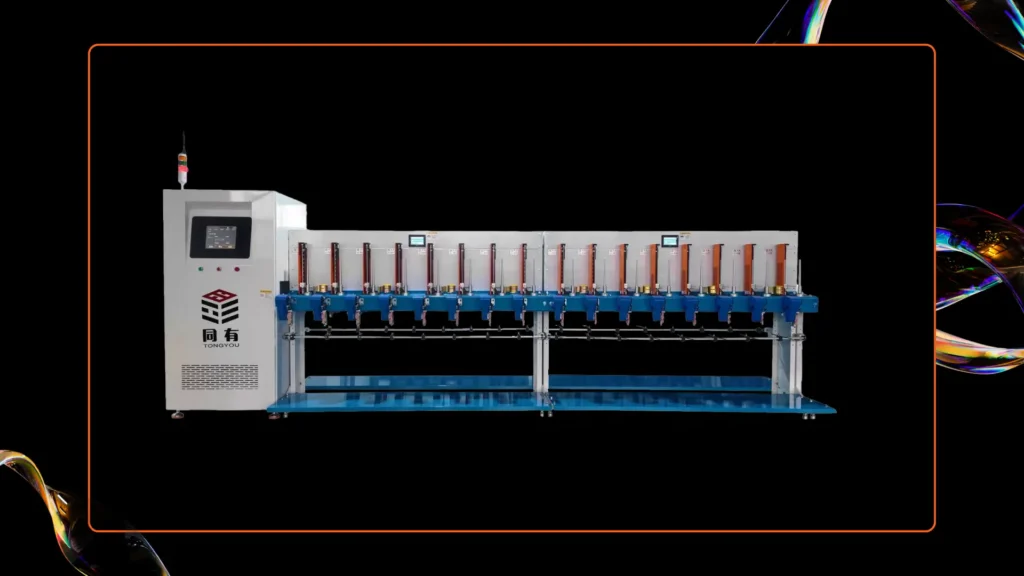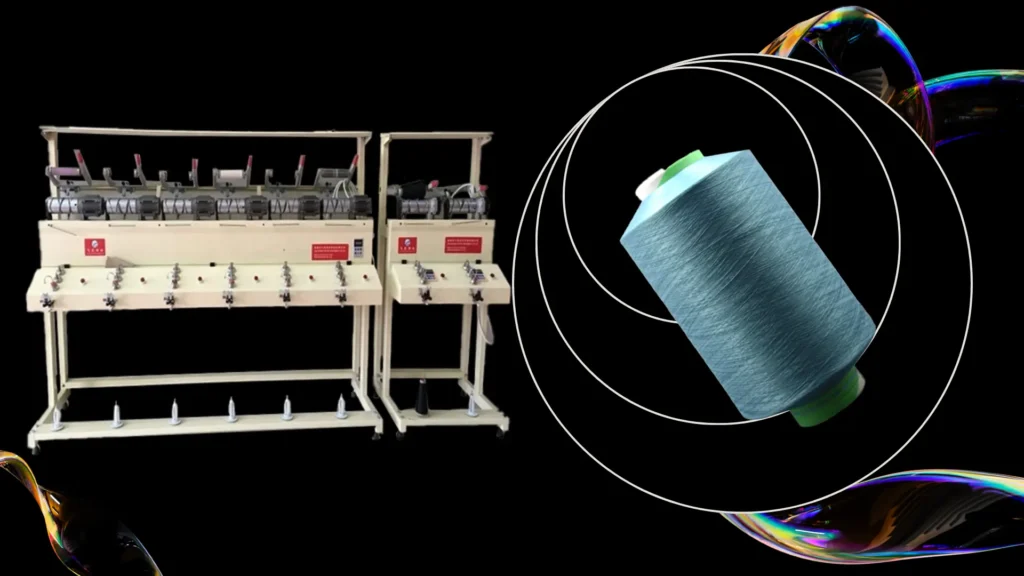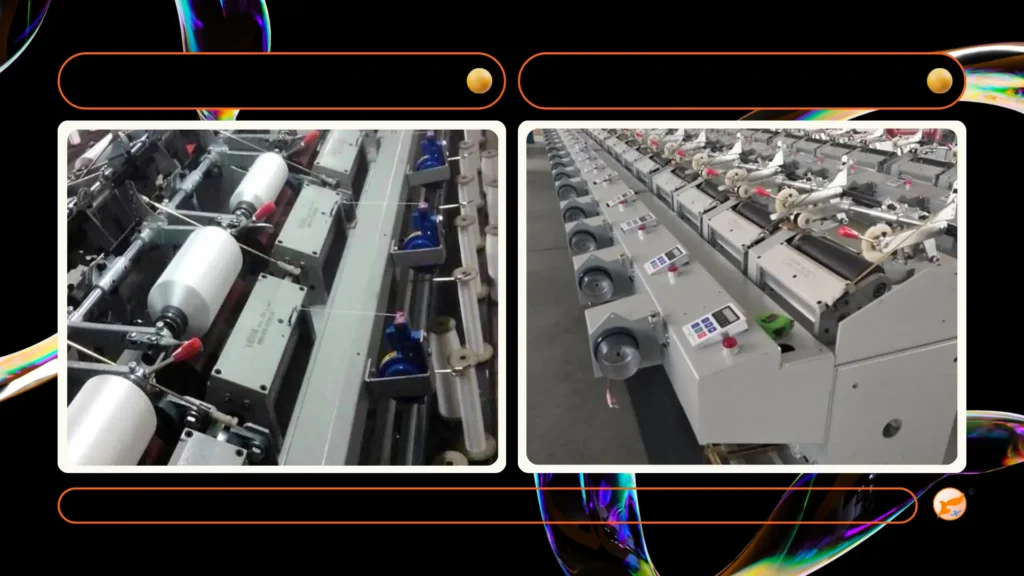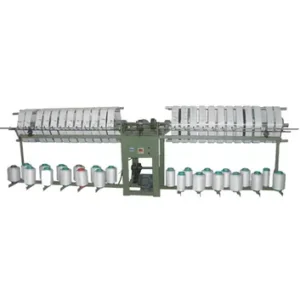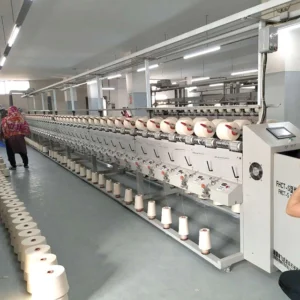Winding machines are a higher category of machinery that cover practically all industries and manufacturing alike.
In this respect, they help treat materials with high effectiveness while the end product of such machines is being wound in a neat and adequate manner.
Learning about the differences between two kinds of winding machines, namely automatic and manual, will help you find the right solution that fits best for your operational requirements.
In this article, we’ll go into further detail on the numerous types of winding machines for wire and each one’s individual features, benefits, and considerations.
Automatic Winding Machines
Operational Efficiency
Automatic winding machines are designed for high speeds, therefore enhancing productivity in a manufacturing context greatly.
These machines can wind material at a speed much higher compared with manual operations, thus enabling businesses to meet stern production schedules.
Besides, automatic machines maintain consistent unwinding quality and tension control, which is important for the realization of consistent products.
This consistent nature reduces the tendency to generate defects, as well as it ensures that the final output from the production chain meets strict quality standards.
By minimizing human intervention, these machines also reduce the possibility of errors arising due to operator fatigue or lapses in concentration.
With this, businesses can look forward to increased output, but more than that, reliability in the production processes.
Automation and Control
Among other characteristics, automatic winding machines feature highly advanced computerized control systems that give way to programming specifications by operators for different materials and products.
This feature facilitates ease of switching between one production lot and another. Another great advantage is the ability to deal with complex patterns of winding and configurations.
Manufacturers who require certain complicated designs or special methods for winding can program automatic machines to carry out the tasks accurately.
To such an extent is automation possible that even the most complicated winding jobs can be executed quickly and accurately, with very minimum manual changes and checking.
Maintenance and Overhauling
Whereas the automatic ones bring all the benefits of efficiency and productivity, they themselves are not without some maintenance demands.
They do need specialists, more often than not, to perform repairs or maintenance, thus further increasing operating expenses.
The cost of investment in an automatic winding machine is high compared with a manual machine.
These costs, however, need to be weighed against the long-term benefits this class of machinery offers in terms of labor cost reductions and high throughputs that can ultimately yield a justifiable return on investment.
Also Read:
- Top 10 Single Spindle Winding Machine Manufacturers in China
- Top 10 Textile Machinery Manufacturers in China
- Top 10 Yarn color card machine manufacturers in China
Manual Winding Machines
Operator Involvement
Manual winding machines are those requiring human control and intervention during the process of winding.
Since the machine requires operators, the expertise and experience of the operators become a key determinant for the quality of the wind.
Manual machines differ from automatic ones in that processes are normally more mechanized.
On the other hand, manual machine operators can make immediate adjustments based on their judgment and expertise.
This more hands-on approach may result in superior quality in certain applications where intricacy is part of the craftsmanship.
Surprises, like anomalies in material properties or other unanticipated problems, might be dealt with in real time by operators as they fine-tune the winding process to what the product requires.
Flexibility and Adaptability
One of the remarkable features of manually wound machines is their ability to offer flexibility that cannot be rivaled.
In particular, these machines are relatively easy to set up concerning various materials and products, thus being very well-suited for small-scale production or customized lots.
For businesses that have frequent changes in their product or must produce some special winding specification, manual machinery provides the needed flexibility to keep up with such demand.
The flexibility can therefore be a significant advantage in customized industries where manufacturers could easily and fast switch in accordance with market trends or customers’ needs.
Maintenance and Upkeep
On the whole, manual winding machinery requires less complex maintenance and repair compared to automatic winding.
Since the design is less complex, numerous operations can be performed by operators with little training; hence, dependence on specialized technicians is minimized or eliminated.
This simplicity not only streamlines the process of maintenance but also helps lower initial investment costs.
For a startup or a smaller business working within tight budget limits, entry into a winding process may be relatively easier with manual winding machines and with less sacrifice of quality.
Choosing the Right Winding Machine
Product Recommend:
Factors to Consider
If you are at the juncture where you have to choose between an automatic and a manual winding machine, there are several key factors that you should consider.
First, consider the production volume and scalability. While much of high-volume production tends to be in the camp of automatic machines due to their speed and efficiency, smaller volumes or specialized runs are indeed suitable for more manual options.
Second, consider the difficulty of the winding patterns and materials you will need to work with. In general, if your production has intricate configurations, then you probably need automatic machines.
Third, assess your available budget and operational constraints. Knowing your financial limitations is important, as the initial costs and continuing maintenance will differ by orders of magnitude between the two types.
Lastly, there is the consideration of the skill level and training of the operators.
Automatic machines may require highly specialized training compared to manual ones, which could be the determining factor in your choice given the abilities of your workforce.
Efficiency vs. Flexibility
Each has its strong points that balance the choice between an automatic and a manual winding machine.
An automatic winding machine is speedy and consistent, especially in high-volume, standardized-production environments.
They can be used in industries that require bulk amounts of similar products since they can work on an uninterrupted basis.
On the other end, manual winding machines offer essential flexibility when dealing with small or customized operations.
They facilitate quick changeovers and a greater level of customization; hence, they are ideal for situations involving a number of variants.
When you understand what you have to focus on in your operations, you will be led toward the right fit for your particular needs in production.
Conclusion
Overall, decisions between automatic and manual winders are based on your specific production needs and business goals.
Each type has its specific strengths and weaknesses, and thus full understanding will provide the possibility to make an informed decision that would enhance your operational efficiency while considering your budget and production objectives.
Whether it is speed and automation that you require or flexibility and hands-on control, there is a winding machine solution available that will meet your specific needs effectively.
Taking the time to review these options will enable you to choose the most beneficial machinery for your manufacturing processes and help drive your business forward.

